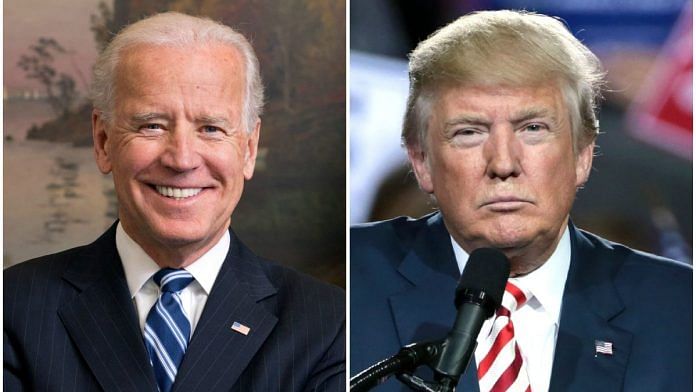New Delhi: On Wednesday, both houses of the US Congress will meet and certify the results of the Electoral College that affirmed Democrat Joe Biden as president-elect and Kamala Harris as vice president-elect of America.
Electoral College consists of a group of electors whose sole purpose is to indirectly elect the US president and its vice president.
The joint session, typically a formality as mandated by the 12th Amendment of the US Constitution, is the last official chance for objections to the results of the election, apart from the court cases lodged by US President Donald Trump that have so far failed to affect the poll results.
On Monday, The Washington Post released an audio recording of Trump’s call with Georgia’s Secretary of State, Brad Raffensperger, urging him to “find 11,780 votes” to overturn the election results.
A group of 11 Republican senators, led by Texas’ Ted Cruz, have also pledged to oppose certification of Trump’s election loss at the joint session Wednesday. The decision was made despite top Republican leaders, like Senator Mitch McConnell, warning against attempts to undermine the election or risk splintering the party.
On Sunday, Trump took to Twitter to praise the 11 Republican senators. He also hit out at a close ally, Senator Tom Cotton, Monday for refusing to object to the Electoral College certification.
On 14 December, results from the Electoral College showed Biden winning 306 votes and Trump 232. The minimum number of votes required to bag the presidency is 270. Biden is set to be sworn in as the 46th president of the US on 20 January.
ThePrint looks at how the certification of results is conducted.
Also read: All about the UN Security Council and India’s two-year term as non-permanent member
Process of counting votes, role of vice president
On 6 January, both the lower and upper houses of the US Congress — the House of Representatives and the Senate — will meet at 11.30 pm IST to open sealed certificates from the 50 states and the District of Columbia, in alphabetical order.
These certificates include a record of a state’s electoral votes. Bipartisan representatives of both houses will then read aloud the results and do an official count of the votes.
The president of the Senate and Vice President Mike Pence will preside over the session and declare the winner at the end. However, if Pence cannot be present, the longest-serving senator in the majority party, currently 87-year-old Republican Charles Ernest Grassley from Iowa, will become the presiding officer.
The position of the presiding officer is ceremonial and has no power to affect certification of the election results.
Last week, a federal judge had dismissed a lawsuit seeking to allow Pence to reject electoral votes on his own — a suit that Pence himself opposed. That said, Pence has, however, “welcomed” the efforts of the group of 11 Republican Senators to derail the result.
What happens if there is a dispute against the count
Scores of House Republicans and a group of Republican senators are expected to object to the count in states like Pennsylvania, where Trump has alleged voter fraud. Former attorney general William Barr had previously confirmed that there was no evidence for such claims.
When the certificate from a state is being read aloud, any member of the US Congress can stand up and object to that vote on any ground. However, the presiding officer does not hear the objection unless it is jointly submitted in writing by a Senator and a House member.
After this, both houses go into separate sessions to consider the objection. The objection is deemed valid if both Houses agree to it by a simple majority vote. If they don’t agree, the original electoral votes will stand.
If a state submits conflicting electoral votes to the US Congress, the two Houses acting concurrently may accept or reject them. If the Houses do not agree, the votes of the electors, certified by the governor of a state, would be counted in the Congress.
Congress has voted on an objection twice. The first was in 1969, when Democratic Representative James O’Hara of Michigan and Democratic Senator Edmund Muskie of Maine invoked an objection to challenge the results of the 1968 election in which former vice president Richard Nixon defeated Democrat Hubert Humphrey and Independent George Wallace. O’Hara and Muskie objected to North Carolina’s count over the actions of a “faithless elector”, but the House and the Senate rejected it and the original count stood.
In 2005, again, when incumbent Republican President George W. Bush was re-elected, two Democrats from both Houses had objected to Ohio’s electoral votes, claiming voting irregularities. But the objection was rejected by both Houses.
Also read: All about Assam’s new bill that will convert govt-aided madrasas to regular schools






